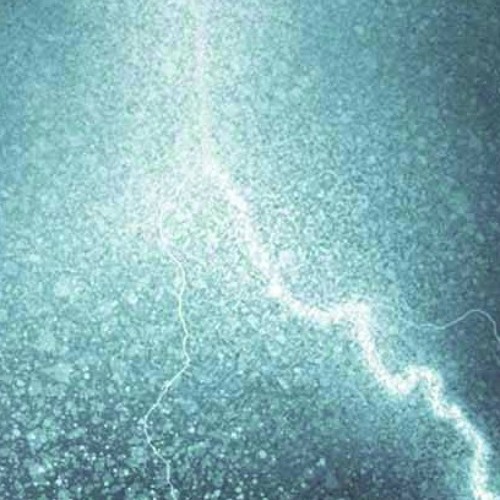- Messages
- 10,152
Sorry for slightly clickbait title 
So this could be better described as - How important are MY amp tones... really? In the context of one particular song.

This is the chorus section of a song. I've been working on this song on and off since December, as a part of my new album.
It was written very much as a stream of consciousness industrial tinged hard-rock meets synths kinda track, and is probably the most "pop" thing I've ever done! I started it off using Helix Native, and pretty much till today I was relying solely on the Revv Red amplifier in Helix Native, boosted with a Boss SD1 and hitting the front of the amp with a very subtle delay in order to make it gallop slightly.
Now, please bear in mind, I'm not calling this mix finished at all. I just found this interesting. How much difference do guitar amps really make??
Here's the chorus with the original Revv Red takes - double-tracked of course:
And here's the same guitar tracks in isolation:
And here's the track with no guitars:
Now....
Here's a version where the guitars switch every couple of bars to a different amp. Same buss processing. Same cabinet impulse. Same DI signal. The amp is the only difference. I attempted to dial each amp in to the song:
Here are the guitars without drums, just the core song elements:
And finally, here are just the guitars:

Hopefully you can hear... once you focus in on a specific element of the song (IE: guitars only) you can really hear tons of differences. But when you pull back and consider the song as a whole... can you really distinguish the different amps?? In some cases perhaps, but on the whole? Not really.
The cause is known as frequency masking. When you add a bunch of individual elements together, frequencies add and subtract against one another in the final mix. This is what causes bass frequencies to become huge when you're listening to multiple tracks, and also what causes high frequencies to become duller.
Mixing is an art. Just as much as deciding what notes to play, what amp to use, what pedals to use, what cab to use, etc.
Now this mix isn't finished... but it's already clear to me. For this sort of pulsating drone-orientated guitar riff, where the underlying rhythm is more important than the notes... the actual amp doesn't matter. What matters are the core tone aspects - having enough pick attack, not being flubby, and generally being able to at least sit next to the vocal.
Hope that gives some of you food for thought... it's certainly given me stuff to think about today. I would've tracked more vocals for more songs, but I've got a cold and can't sing right now - some may say I never could, but whatever....
Cheers!
So this could be better described as - How important are MY amp tones... really? In the context of one particular song.
This is the chorus section of a song. I've been working on this song on and off since December, as a part of my new album.
It was written very much as a stream of consciousness industrial tinged hard-rock meets synths kinda track, and is probably the most "pop" thing I've ever done! I started it off using Helix Native, and pretty much till today I was relying solely on the Revv Red amplifier in Helix Native, boosted with a Boss SD1 and hitting the front of the amp with a very subtle delay in order to make it gallop slightly.
Now, please bear in mind, I'm not calling this mix finished at all. I just found this interesting. How much difference do guitar amps really make??
Here's the chorus with the original Revv Red takes - double-tracked of course:
And here's the same guitar tracks in isolation:
And here's the track with no guitars:
Now....
Here's a version where the guitars switch every couple of bars to a different amp. Same buss processing. Same cabinet impulse. Same DI signal. The amp is the only difference. I attempted to dial each amp in to the song:
Here are the guitars without drums, just the core song elements:
And finally, here are just the guitars:
Hopefully you can hear... once you focus in on a specific element of the song (IE: guitars only) you can really hear tons of differences. But when you pull back and consider the song as a whole... can you really distinguish the different amps?? In some cases perhaps, but on the whole? Not really.
The cause is known as frequency masking. When you add a bunch of individual elements together, frequencies add and subtract against one another in the final mix. This is what causes bass frequencies to become huge when you're listening to multiple tracks, and also what causes high frequencies to become duller.
Mixing is an art. Just as much as deciding what notes to play, what amp to use, what pedals to use, what cab to use, etc.
Now this mix isn't finished... but it's already clear to me. For this sort of pulsating drone-orientated guitar riff, where the underlying rhythm is more important than the notes... the actual amp doesn't matter. What matters are the core tone aspects - having enough pick attack, not being flubby, and generally being able to at least sit next to the vocal.
Hope that gives some of you food for thought... it's certainly given me stuff to think about today. I would've tracked more vocals for more songs, but I've got a cold and can't sing right now - some may say I never could, but whatever....
Cheers!



